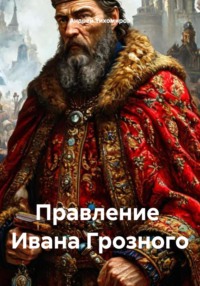
Полная версия
Mexico and the USA: the history of relations

Андрей Тихомиров
Mexico and the USA: the history of relations
Ancient History of Mexico
"Mexico" is a Nahuatl term for the heart of the Aztec Empire, namely the valley of Mexico and the surrounding territories, and its people are known as Mexico. The terms are clearly related; it is generally believed that the valley toponym was the source of the main ethnonym for the Aztec Triple Alliance, but it may have been the other way around. During the colonial era (1521-1821), Mexico was called New Spain. In the eighteenth century, this central region became the intendancy of Mexico, during the reorganization of the empire, the Bourbon reforms. After New Spain gained independence from the Spanish Empire in 1821 and became a sovereign state, the territory became known as the state of Mexico, and the new country was named after its capital: Mexico City, which itself was founded in 1524 on the site of the ancient capital of Mexico, Tenochtitlan.
The prehistory of Mexico dates back thousands of years. The earliest human artifacts in Mexico are fragments of stone tools found near bonfires in the valley of Mexico and dated by radiocarbon dating approximately 10,000 years ago. Mexico is a place of domestication of corn, tomatoes and legumes, which produced surplus agricultural products. This allowed the transition from Paleoindean hunter-gatherers to settled agricultural settlements, starting around 5000 BC. In subsequent epochs of culture formation, maize cultivation and cultural traits, such as the mythological and religious complex, as well as the vigesimal number system (base 20), spread from Mexican cultures to the rest of the Mesoamerican culture. During this period, villages became more dense in terms of population, becoming socially stratified at the expense of the craft class and turning into chiefdoms. The most powerful rulers had religious and political power, organizing the construction of large ceremonial centers.
The earliest complex civilization in Mexico was the Olmec culture, which flourished on the Gulf coast from about 1500 BC. Olmec cultural traits spread across Mexico to other formative cultures in Chiapas, Oaxaca, and the Valley of Mexico. During the formation of the country, various religious and symbolic traditions, as well as artistic and architectural complexes spread. The epoch of the formation of Mesoamerica is considered one of the six independent cradles of civilization. In the subsequent preclassic period, the Maya and Zapotec civilizations created complex centers in Calacmula and Monte Alban, respectively. During this period, the first true Mesoamerican writing systems were developed in the Epi-Olmec and Zapotec cultures. The Mesoamerican writing tradition reached its heyday in the classic Maya hieroglyphic script. The earliest written sources belong to this era. The tradition of writing became important after the Spanish conquest in 1521, when local scribes learned to write in their languages with letters of the alphabet, while continuing to create graphic texts.
In Central Mexico, at the height of the classical period, Teotihuacan dominated, which formed a military and commercial empire, whose political influence extended both to the south, to the Maya region, and to the north. Teotihuacan, with a population of over 150,000, had some of the largest pyramid structures in pre-Columbian America. After the collapse of Teotihuacan around 600 AD, competition arose between several important political centers in central Mexico, such as Xochicalco and Cholula. At this time, during the Epiclassical period, the Nahua peoples began to move from north to south, into Mesoamerica, and became politically and culturally dominant in central Mexico, as they displaced speakers of the Oto-Manguean languages. In the early post-classical era (around 1000-1519 AD), the Toltec culture dominated Central Mexico, the Mixtecs dominated Oaxaca, and the Maya lowlands had important centers in Chichen Itza and Mayapan. By the end of the post-classical period, Mexico had established dominance, creating a political and economic empire based in the city of Tenochtitlan (modern Mexico City), stretching from central Mexico to the border with Guatemala. Alexander von Humboldt popularized the modern use of the term "Aztecs" as a collective term applied to all peoples connected by trade, customs, religion and language with the State of Mexico and the Excan Tlahtoloyan, the Triple Alliance. In 1843, with the publication of the work of William H. According to Prescott, it was adopted by most countries of the world, including 19th-century Mexican scientists who considered it a way to distinguish modern Mexicans from pre-conquest Mexicans. This usage has been the subject of debate since the late 20th century.
The Aztec Empire was an informal empire or hegemon because it did not have supreme authority over the conquered territories; it was content to pay tribute from them. It was an intermittent empire because not all the dominated territories were connected; for example, the southern peripheral zones of Hokonochko did not have direct contact with the center. The hegemonic character of the Aztec empire was demonstrated by the restoration of local rulers to their former position after the conquest of their city-state. The Aztecs did not interfere in local affairs while the tribute was being paid. The Aztecs of Central Mexico built a tributary empire that encompassed most of central Mexico. The Aztecs were known for practicing human sacrifice on a large scale. Along with this practice, they avoided killing enemies on the battlefield. Their losses during the war were much lower than those of their Spanish counterparts, whose main goal was immediate slaughter during the battle. This particular Mesoamerican cultural tradition of human sacrifice gradually ceased with the Spanish conquest in the 16th century. Other indigenous Mexican cultures were conquered and gradually submitted to Spanish colonial rule.
The Colonial Era
Since the colonial era and up to the 21st century, the indigenous roots of Mexican history and culture have been important to Mexican identity. The National Museum of Anthropology in Mexico City is a showcase of the country's pre-Hispanic greatness. Although the Spanish Empire established colonies in the Caribbean starting in 1493, it was not until the second decade of the sixteenth century that they began exploring the eastern coast of Mexico. Spaniards first learned about Mexico during the expedition of Juan de Grijalva in 1518. The Spanish conquest of the Aztec Empire began in February 1519, when Hernan Cortez landed on the Gulf coast and founded the Spanish city of Veracruz. About 500 conquistadors, along with horses, cannons, swords and long guns, gave the Spaniards some technological advantages over local warriors, but the key to Spain's victory was the conclusion of strategic alliances with disaffected local city-states (Altepetl), who fought with them against the Triple Alliance of the Aztecs. Also an important role in the victory of Spain was played by the cultural translator Cortez Malinche, a Nahua woman enslaved in the Maya area, which the Spaniards purchased as a gift. She quickly learned Spanish and gave strategic advice on how to deal with both allies and enemies from the indigenous population.
The capture of Tenochtitlan in 1521 and the immediate foundation of the Spanish capital Mexico City on its ruins marked the beginning of a 300-year colonial era during which Mexico was known as New Spain. Two factors made Mexico the jewel of the Spanish Empire: the existence of a large, hierarchically organized Mesoamerican population that paid tribute and performed compulsory labor, and the discovery of extensive silver deposits in northern Mexico. The Kingdom of New Spain was created from the remnants of the Aztec Empire. The two pillars of Spanish rule were the state and the Roman Catholic Church, both under the rule of the Spanish crown. In 1493, the Pope granted the Spanish monarchy broad powers for its overseas empire on the condition that the crown would spread Christianity in its new kingdoms. In 1524, King Charles I created the Council of the Indies, based in Spain, to oversee state power in its overseas territories; in New Spain, the Crown established a high court in Mexico City, a real Audiencia, and then in 1535 established the Viceroyalty of New Spain. The Viceroy was the highest official of the State. In the religious sphere, the Diocese of Mexico was established in 1530 and elevated to the Archdiocese of Mexico in 1546, with the archbishop as the head of the church hierarchy overseeing the Roman Catholic clergy. Castilian Spanish was the language of the rulers. The Catholic faith was the only one allowed, non-Catholics (Jews and Protestants) and Catholics (with the exception of Indians) who held unorthodox views were subject to the Mexican Inquisition, founded in 1571.
In the first half century of Spanish rule, a network of Spanish cities was created, sometimes in pre-Columbian territories where a dense indigenous population lived. The capital of Mexico City was and remains the main city, but other cities founded in the sixteenth century remain important, including Puebla, Guadalajara and the port of Veracruz. Cities and towns were centers of civil officials, clergy, business, the Spanish elite, as well as artisans and workers of mixed race and indigenous peoples. The viceroyalty to the greatest extent included the territories of modern Mexico, Central America up to Costa Rica in the south and western part of the USA. The capital of the viceroyalty of Mexico City also ruled the Spanish West Indies (Caribbean), the Spanish East Indies (Philippines) and Spanish Florida. In 1819, Spain signed the Adams-Onis Treaty with the United States, which established the northern border of New Spain.
The rich deposits of silver, especially in Zacatecas and Guanajuato, led to the fact that silver mining became dominant in the economy of New Spain. The Mexican silver peso became the first currency used worldwide. Taxes on the production of silver became the main source of income for the Spanish monarchy. Other important industries were agriculture and cattle haciendas, as well as trading activities in the main cities and ports. Thanks to trade links with Asia, the rest of America, Africa and Europe, as well as the profound influence of New World silver, Central Mexico became one of the first regions to be included in the globalized economy. Being at the crossroads of trade, people and cultures, Mexico City is called "the first city in the world". The Nao de China (Manila galleons) were operated for two and a half centuries and connected New Spain with Asia. Silver and cochineal red dye were shipped from Veracruz to the Atlantic ports of North and South America and Spain. Veracruz was also the main port of entry into the mainland of New Spain of European goods, immigrants from Spain and African slaves. The Camino Real de Tierra Adentro connected Mexico City with the interior of New Spain.
The population of Mexico was overwhelmingly indigenous and rural throughout the colonial period and beyond, despite a significant reduction in their numbers due to epidemic diseases. Diseases such as smallpox, measles and others were introduced by Europeans and African slaves, especially in the sixteenth century. The indigenous population stabilized at one to one and a half million people in the 17th century, compared with the most common figure of five to thirty million people before contact was established. During the three hundred years of the colonial era, Mexico received from 400 to 500 thousand Europeans, from 200 to 250 thousand African slaves and from 40 to 120 thousand Asians.
Under Viceroy Revillagigedo, the first comprehensive census with racial classifications was conducted in 1793. Although most of her original datasets have reportedly been lost, thus much of what is known about her comes from essays and field studies conducted by scientists who had access to census data and used them as reference materials for their work, such as the German scientist Alexander von Humboldt. Europeans made up from 18% to 22% of the population of New Spain, Mestizos – from 21% to 25%, Indians – from 51% to 61%, and Africans – from 6,000 to 10,000 people. The total population ranged from 3,799,561 to 6,122,354. It is concluded that the growth trends in the number of whites and mestizos were uniform, while the percentage of the indigenous population decreased at a rate of 13-17% per century, mainly due to the fact that the latter had higher mortality rates due to living in remote areas and constant war with colonists.
Colonial law with Spanish roots was introduced and secured to local customs, creating a hierarchy between the local jurisdiction (cabildos) and the Spanish crown. The highest administrative positions were closed to natives of the country, even those in whose veins flowed pure Spanish blood (criollos). The administration was based on racial division. Society was organized according to a racial hierarchy, with whites at the top, mixed-race people and blacks in the middle, and indigenous people at the very bottom. There were official legal designations of racial categories. The Republic of Spaniards (Republic of Spain) consisted of Spaniards of European and American descent, Castes of mixed race and black Africans. The Republic of the Indians (República de Indios) consisted of an indigenous population, which the Spaniards united under the term "Indians" (indio), a Spanish colonial social construct that indigenous groups and individuals rejected as a category. Spaniards were exempt from paying tribute, Spanish men had access to higher education, could hold civil and ecclesiastical positions, were subject to inquisition and conscription when permanent armed forces were created at the end of the eighteenth century. Indigenous peoples paid tribute but were exempted from the Inquisition, indigenous men were excluded from the priesthood; and exempted from military service. Although the racial system seems immutable and inflexible, there was some mobility in it, and the racial dominance of whites was not complete. Since the indigenous population of New Spain was very large, the demand for expensive black slaves was less than in other parts of Spanish America. At the end of the eighteenth century, the crown carried out reforms that granted the Spaniards (peninsulares) of Iberian origin privileges over the natives of America (criollos), limiting their access to official positions. This discrimination between the two of them caused discontent among the white elite in the colony.
Конец ознакомительного фрагмента.
Текст предоставлен ООО «ЛитРес».
Прочитайте эту книгу целиком, купив полную легальную версию на ЛитРес.
Безопасно оплатить книгу можно банковской картой Visa, MasterCard, Maestro, со счета мобильного телефона, с платежного терминала, в салоне МТС или Связной, через PayPal, WebMoney, Яндекс.Деньги, QIWI Кошелек, бонусными картами или другим удобным Вам способом.











